https://www.youtube.com/watch?v=aRy8A3-1A9I
8 Chess Concepts Every Chess Player Should Know - Chess Principles, Ideas, Strategies and Tips
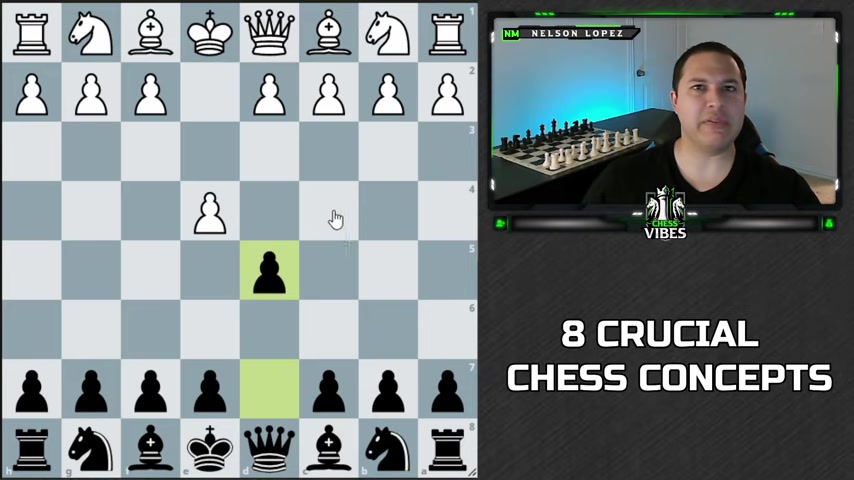
And after this , we get this sort of like uh like a fortress type of position where white's probably just gonna kind of sit here and run the king around and black can't really make progress because of the past pond .
But white can't really force these out of the way because the queen .
And so you end up getting a draw according to Stockfish queen H six king G three .
I don't know how long this line goes , but you get the idea .
That's the , the best play .
So I thought that was fascinating .
I was expecting this to be like a really nice puzzle .
So , oh , first prize puzzle and then I found out that it , you know , wasn't because of the uh the queen A four idea .
So let me know your thoughts hopefully you guys enjoyed that and I'll see you in the next one .
Stay sharp , play smart , take care .
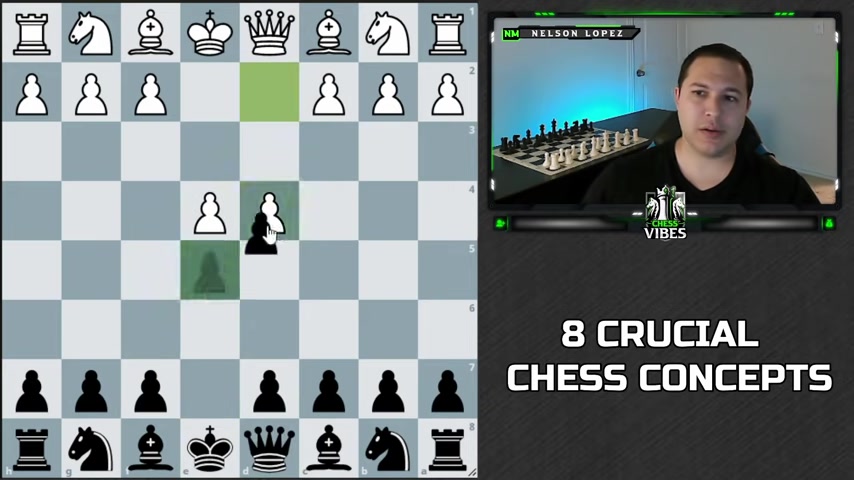
Now , after captures captures , there's no knight that can go to C three and chase away your queen .
So that's one of the main reasons behind why if your opponent plays the move C three , you should play D five .
So that's the basic idea .
Now , let's look at some openings where this is very practical .
The Danish gambit , you capture , white plays the move C three .
Now you could accept the gambit , but it's super risky and White gets all sorts of compensation and you have to really watch out that you don't get check made .
So probably a better idea is as soon as white plays C three .
What's the move we play ?
That's right .
We played D five and this is one of the strongest responses to the Danish gambit because now if White captures , you can simply take back with the queen and guess what ?
White is not gonna be harassing your queen because the pawns in the way .
Let's see one more example , the Ponzi E four E five night of 39 C six in the move C three is known as the Ponzi .
And guess what ?
One of Black's best responses is D five captures and captures .
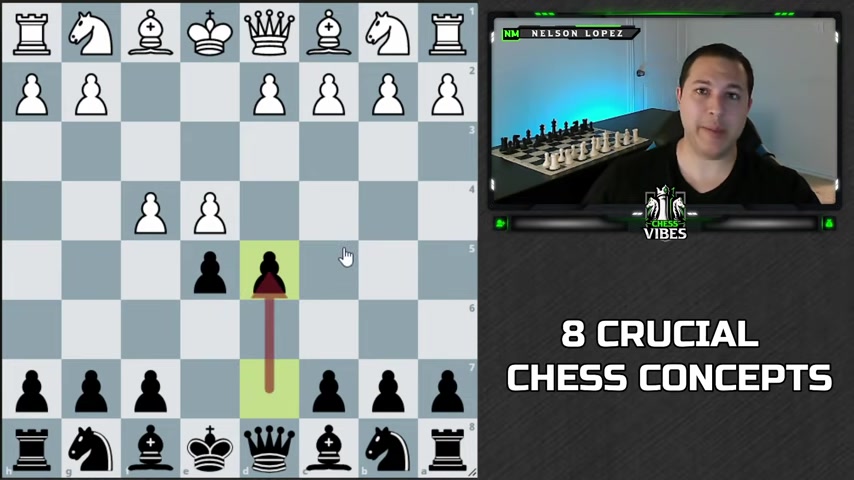
So to recap in E four E five openings , if white plays the move C three , you should immediately consider playing D five .
So concept number two is that when you're playing against gambits , you should consider the move D five .
What do I mean by that ?
Well , we just looked at the Danish gambit and one of the best moves for black is D five .
Another example is the king's gambit .
And the , the move D five in this position is known as the fok beer counter gambit , which is again one of black's better responses to the king's gambit .
One more example which is very similar is the Vienna Gambit where white plays NC three , then F four .
And what do you think one of the best moves for black is you got it D five .
So if you're black and your opponent plays some sort of gambit involving F four , make sure you consider D five right away .
It's usually a pretty good idea .
So we just looked at king pawn openings .
Now we're gonna talk a little bit about queen pawn openings .
So concept number three is that in queen pond openings , usually you don't want to block the sea pon .
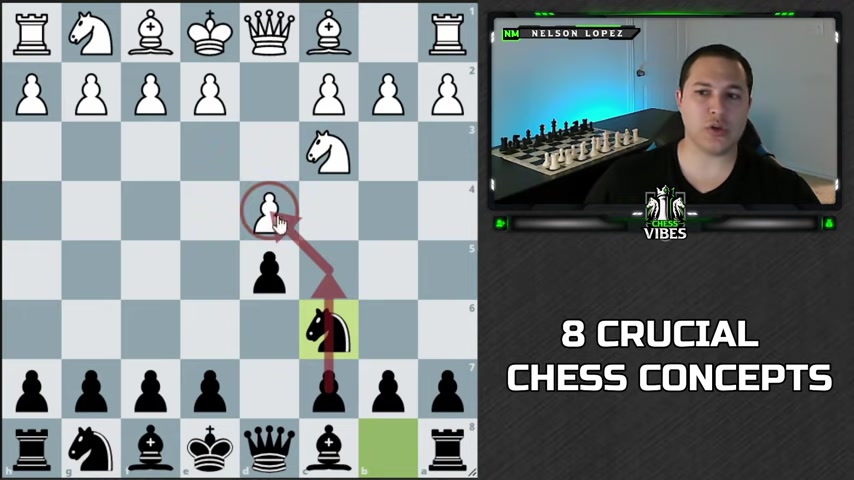
So for example , night C 39 C six , both players have now blocked their sea pawns from moving forward .
The first reason that you don't want to block your C po is this is usually a very good way to break open the center and attack White's central strong point .
Same thing for white C four is a good move to break open the center and attack Blacks central strong point .
And by blocking it , you now can no longer do that or at least , not easily .
And the second reason is by blocking this pawn , you're not giving your queen the ability to come out to these squares .
If we go back instead of night C six .
Suppose black plays C five .
And now you notice black's queen has lots of really good options .
C seven can put pressure on this file and control this diagonal B six can attack the B two pawn and also put more pressure on D four .
And even A five is good .
You can create a pin , put the key in check and also control squares along this rank at , at some point as well .
So by taking away those options for your queen , you could be putting yourself at a disadvantage .

This is why the queen's gambit is such a popular and very good opening for white because it immediately attacks the center and also lets white's queen out so that it has all these different options that we just talked about .
The concept number four is useful in the end game .
And it basically says that the distance from a one to a eight is the same distance as a one to H eight .
So another way to , to think about it is that if my king wants to walk to the square one way to do , it would be 123456 moves straight ahead and I land on that square .
Another way to do it would be 123456 or even another way , 123456 .
Or I could even do something like 123456 .
You get the idea it takes six moves regardless of how I want to go about getting to that square .
Now , why is that important ?
I want you to consider this position .

Why has this pawn going this way ?
All he has to do is come over here , take this pawn and then get a queen and he will win the game .
But let's see what happens if he tries to do that .
King .
Here , king , here king , here king , here king , here king , here king , here king here takes on .
But then black plays the move king to C seven and guess what ?
White's king is now stuck on this a file .
The only thing you can do is move here , black goes there , they can keep going back and forth .
And eventually if white tries to push the pawn , it's now a stalemate .
White can't move tie game .
So it's just a draw , right ?
I want you to consider the fact that it takes white 1234 moves to get there going like that or 1234 moves going like this .
Now , let's see how that difference affects the outcome of the game .

So white goes here , black goes , here , white goes here and now black's king has to make a tough decision since it can't go up here , he has to either go this way or this way if he goes here .
Well , then White goes here .
Same path that we talked about .
Black goes here here , here , here and look at the difference .
Black's king is one square a little bit further away .
And now when he tries to get there , white simply goes there , escorts the pond down and wins the game .
See by making this path instead of this path , white essentially cut off Black's king and got the victory .
This is also known as the crooked path .
So instead of walking in a straight line somewhere , you would walk in a crooked path like this .
This is super useful in end games where your king can sometimes accomplish two things at the same time simply by changing up the path that the king takes .
Concept number five is that you are guaranteed to win more chess games .
If you hit the thumbs up button on this video .

Wait .
No , no , no , sorry .
OK .
The real concept number five is that you want to be the first player to control a diagonal or a file .
What do I mean ?
Let's just say white is gonna play the move G three because they would like to bring the bishop here to control this diagonal .
Let's say black plays B six because they would also like to bring their bishop and control this diagonal .
What do you think is gonna happen in this game ?
Well , white is gonna play bishop G two .
And if black plays bishop B seven , guess what ?
Thanks a lot .
Game over white wins because as soon as white gets control of the diagonal , black can no longer simply put a piece there .
Black either now has to defend the bishop first or block it off somehow , maybe with the knight and then put the bishop .
But it becomes much more difficult to put a piece on that diagonal .
When there was nothing on the diagon , it was very simple for white to simply play bishop to G two .

So the important takeaway is be the first player to control a diagonal or also a file .
So here's a very simple example where we have the exact same position except white has a very big advantage because white gains control of the file first .
And now black can never even play there because white simply captures the rook .
So be the first player to gain control of a file and you will have a pretty big advantage .
Now , this is the exact same position except I have added an extra rook for both players .
Now it's a little bit different because even though white gets the file , first , black can still play there because they have the rook defending it .
So in this case , the important thing to take away here is that you don't want to be the first player to make a trade .
For example , if white were to capture this rook , even though it's a simple trade , it's actually a very bad move because now black has control of the file and white can't do anything about it .
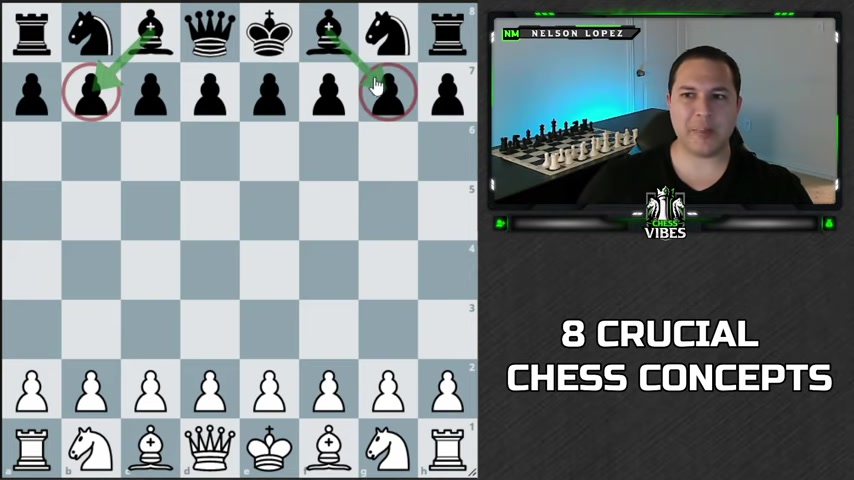
So whenever you find yourself in a situation where there's tension between rooks , usually it's always the wrong decision to trade first .
You wanna wait , do something else , let your opponent trade into you because then you gain control of the file .
So concept number six , is that a free bee or G pawn might be a poisoned pawn .
So let me explain that at the start of the game , B and G pawns are defended by bishops .
So you can't take them or the bishop would just take you back .
But as the game goes on , sometimes those bishops move away and then the pawn becomes undefended .
So here's an example where white has played queen to be three to attack the undefended pawn .
But if black plays night C six and white decides to take the free pawn , they're actually gonna lose the game because knight takes four and white has no way to stop this threat .
There's nothing that white can do about this .
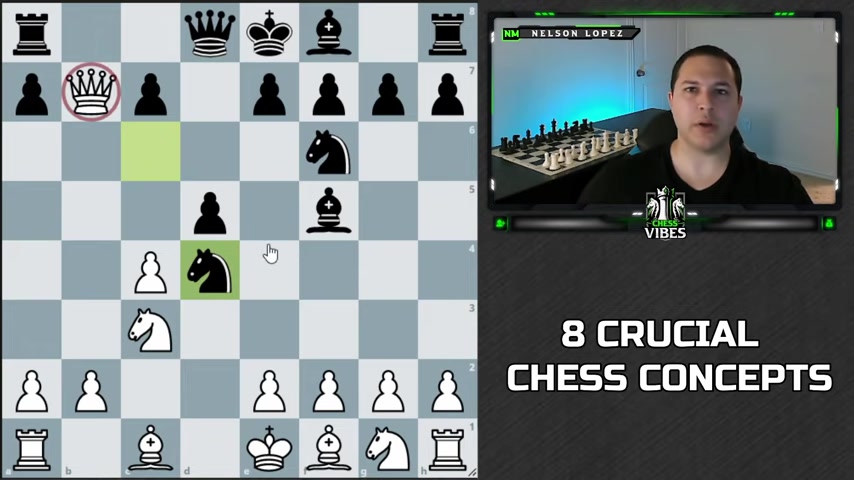
White's in big trouble and all white got out of the deal was one measly pawn .
So in this case , it was a poisoned pawn .
Think snow white and the apple , you don't want to take it , you don't want to eat it .
It's just not worth it .
Now , in this example , the reason it was bad is because what was allowing knight 64 with another threat ?
Sometimes the position looks more like this .
And if you take it , the dangerous thing is that the rook can come and attack your queen .
And even if you get two pawns out of it , depending on what the rook is attacking , it could be bad for you .
So you wanna watch out , take those ponds .
Now , that being said , sometimes you can get away with taking those pawns .
For example , if black plays the move E six , well , now it's ok for white to take this because not only is he getting the pawn , they're also threatening the rook .
Now , black has to deal with that , maybe do this to defend it .
So sometimes you can get away with it but keep in mind it could be poisoned and you always wanna check for that .
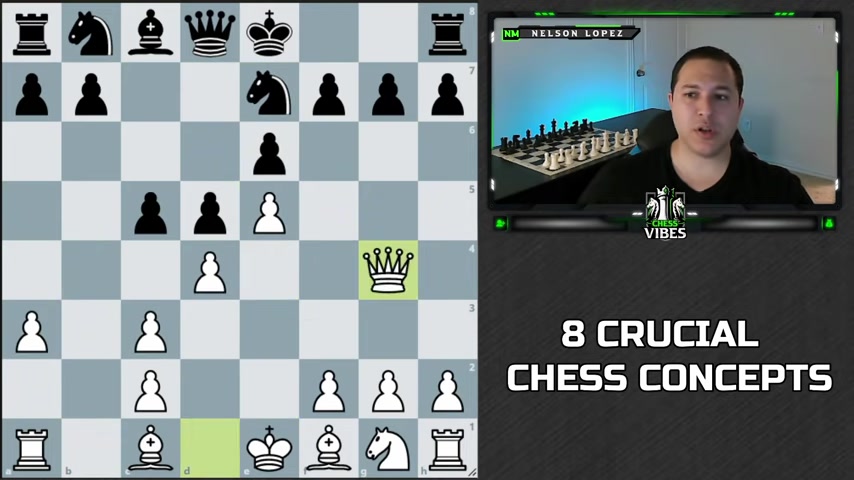
I'll show you one more example where there's a poisoned G pawn .
So this comes out of the French defense and this is one of the main lines black captures plays 97 and white plays queen to G four attacking the pawn on G7 .
And then black just ignores it .
White captures .
And this is actually called the poison pawn variation of the French defense .
So they even named it after the fact that it's a poison pawn .
And the reason is even though it's a pawn , black plays Rick G eight , white actually gets two pawns .
Black's position after just a few moves is extremely aggressive and white has to be very , very careful .
White is kind of in a tough situation because they don't want to castle this way .
It's pretty wide open .
They don't really want castle this way because there's two open files that blacks gonna castle and then the rooks are gonna come over and it's kind of like , ok , what's white gonna do ?
So , the question is , was it worth it to take those ponds ?
It's debatable .
I mean , this is a playable line .
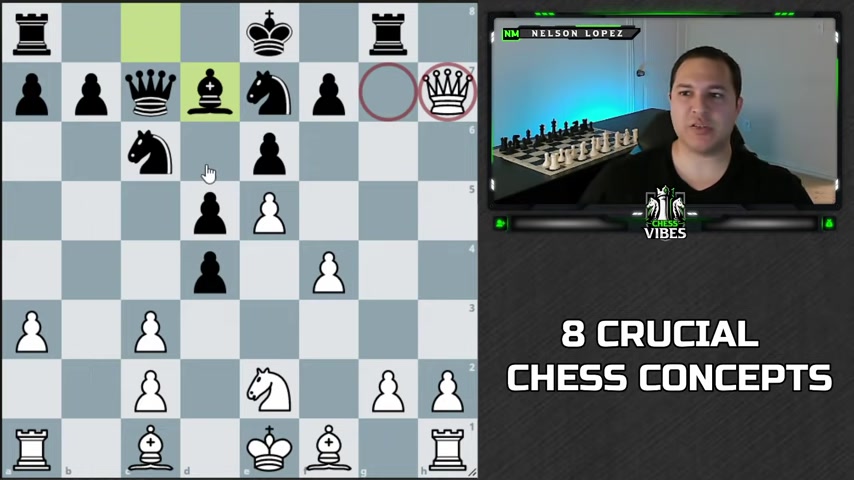
Lots of people play this , but it's very dynamic .
It's very tricky and it's not just two free pawns .
They are poisoned pawns and black does get a lot of compensation for it .
So watch out when you take those B and G pawns , they could be poisoned .
Concept number seven is that you want to be flexible when you play chess .
What do I mean by flexible ?
A lot of people play chess with plans that they think they're going to do no matter what , like I'm gonna do this every game and it doesn't matter what my opponent does .
That's not how chess works .
You need to be able to react to what your opponent is doing .
That is a huge part of chess .
So let me give you an example E four E 59 F three .
And let's just say I am a piano player who likes to play bishop to C four after this So I'm expecting NC six and then I'm gonna play the move bishop to C four .
Let's say black plays F six .
I know a lot of players that would say man doesn't really affect my plan .
I'm gonna play bishop C four .
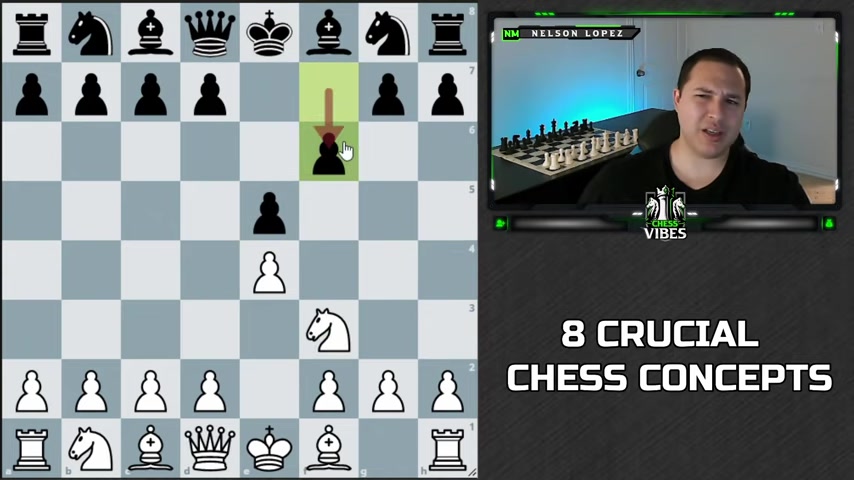
And by the way , bishop C four is totally fine move .
There's nothing wrong with it .
But there is an opportunity here for white to take advantage of a little tactical trick .
White can actually capture the pawn on E five .
And if black recaptures because of the weakness here , white can play queen H five check .
And after G six captures and you got a fork and you're winning the rook in the corner , it's a cool little tactic .
But if white was not flexible and paying attention to something that was weird that black played , they probably would have missed it just played four and went on about the normal moves that they always play .
So be flexible , be on the lookout for weird moves or weaknesses that your opponent might create and look for ways to take advantage of those right .
Concept number eight is super useful when you castle king sight .
And it's actually a little saying that you may have heard , but it goes something like this with a knight on F eight , there's no mate and you might say what in the world does that mean ?
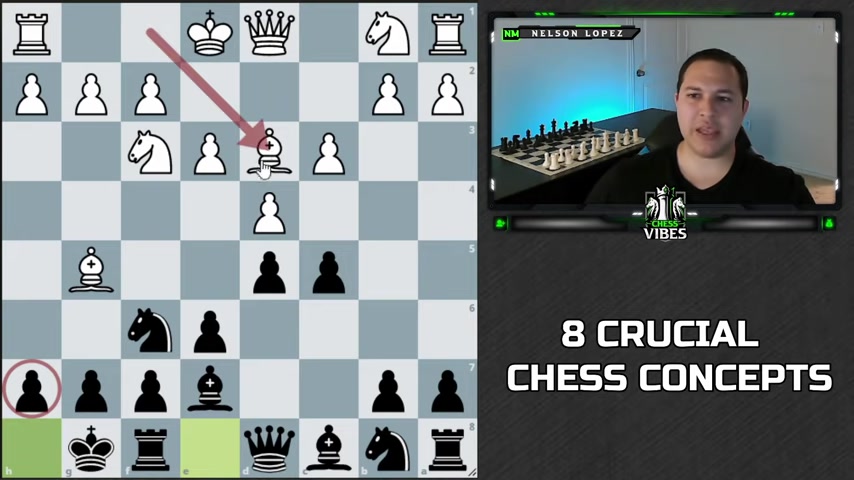
So let me show you an example , first of all , before I explain what exactly that means let me just kind of explain one thing about castling kings site .
So here's a game where black decides to castle kings site .
Now , when you castle kings side , the most common square that is going to be attacked by your opponent is age seven , it's just the way that the pieces line up .
It's very easy for a bishop to attack it .
It's very easy for a knight to come in and attack it .
And if there's ever an open age file , the rooks can attack it , the queen can attack it different ways .
It's just the most common square that's attacked .
That's just how it is .
And the funny thing is the knight on F six actually does a very good job of defending it .
But the issue with this knight on F six is that it can very easily be attacked .
As in this example , White can just take it with his bishop if they want or sometimes the knight can come here and trade off that or this pond can go forward and attack it .
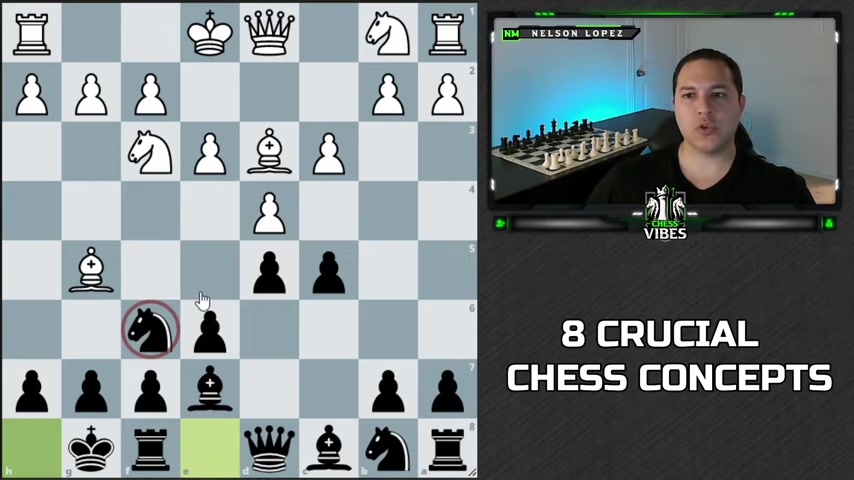
Why is the bar saying it's equal ?
Do I have a perpetual check ?
I have a perpetual check .
That's amazing .
That is incredible .
No , I don't .
Here , here , here I do .
I do , I do have a perpetual check and I had to move .
Boom .
How do you like that , Martin ?
All right guys .
I'm back to play Martin .
But this wheel over here is going to determine what move I have to make .
So there's three green moves , which means I can just move whatever I want .
There's a yellow capture which means I have to capture a piece .
There is a blue check which means I have to put Martin in check if I can .
There's a red blunder which means I have to make a terrible move .
And then there's give Martin a queen , which means I have to pause the game , add a queen to the board for Martin and keep going .
If at any moment I land on something that I can't do like the check or the capture , I'm going to say that it defaults to give Martin a queen and we're gonna see if that's too difficult or not .
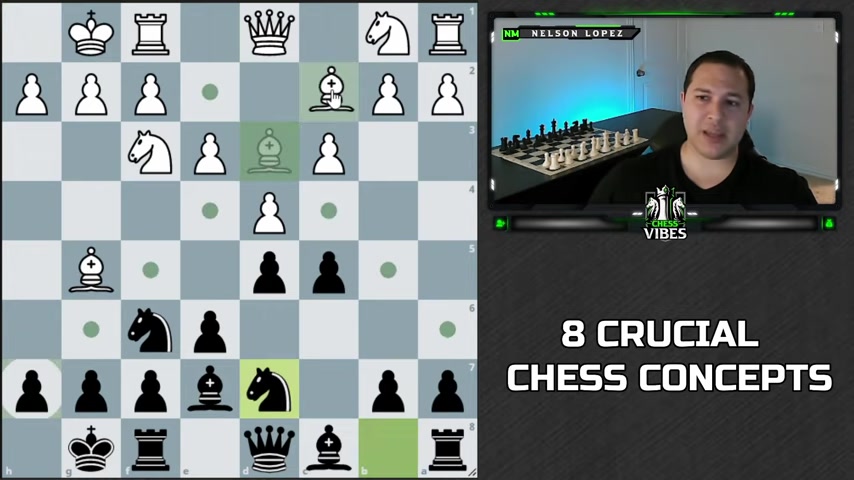
And after White did the same idea , Bishop C two , black played the move up to E eight , white played queen of the three , setting up the same checkmate and black plays the move knight to F eight .
Now the knight if you'll notice is defending on H seven .
So if white tries the same idea , guess what ?
Black just takes it and says , thank you very much and I'm up a queen .
So now you can see where that saying comes from with a night on F eight .
There's no mate .
And the really cool thing about this night on F eight is if you're playing with the white pieces and your goal is to get rid of the night so that you can check mate .
How are you gonna do that ?
Yeah .
There's really no way like this .
Bishop's not getting over there any time soon .
The night , there's no way the night can get there .
There's , there's no pieces that can get anywhere close to this night on F eight .

Um And we'll , we'll go from there .
So let's go ahead and click the wheel and here we go .
What's the first ?
Oh , a move ?
Great .
So I'm gonna play E four and spin it again .
Blunder .
Ok .
Can I even blunder ?
I can blunder .
I can blunder .
I can play Bishop a six .
So I'll play bishop a six .
He did take it .
Let's keep going .
Hey , I get to move again .
All right .
I am going to play D four and spin it again .
Really ?
OK .
How do I blunder ?
Let's Blender .
My bishop , I guess .
Yeah , we to go there .
You didn't take it .
Blunder turned out to be a brilliant .
Oh , it landed on blunder again .
OK .
Let's like double blunder .
The bishop .
Come on , Martin .
There you go .
All right .
Get what is like , see , this is why I don't play games that are luck based because this happens .
I have to blunder again .
What's a blunder here ?
Are you looking for a way to reach a wider audience and get more views on your videos?
Our innovative video to text transcribing service can help you do just that.
We provide accurate transcriptions of your videos along with visual content that will help you attract new viewers and keep them engaged. Plus, our data analytics and ad campaign tools can help you monetize your content and maximize your revenue.
Let's partner up and take your video content to the next level!
Contact us today to learn more.